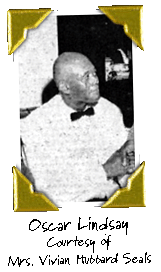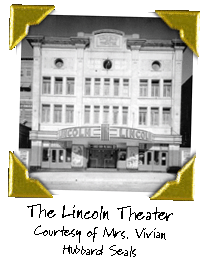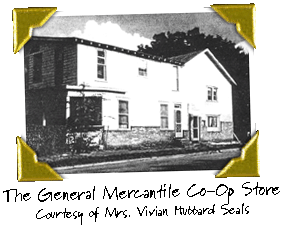

Home
| Contents | Next
Taking Care of Business
|
In
spite of segregation, many African Americans were able
to thrive financially. Black businessmen and professionals
within the black neighborhoods profited from the business
of patrons within their own communities. A 1915 survey
revealed that approximately four hundred African American
businesses served Houston’s black communities.
Additional professionals, such as teachers and ministers,
were employed in black schools and churches. With such
an active base of goods and services, African American
communities became self-sufficient entities, selling and
purchasing products within their neighborhoods.
|
| _____
Independence
Heights was one such self-sufficient community during the
early twentieth century. Many of the neighborhood’s residents
either worked as professionals or owned and operated businesses.
Community members recall a vast array of shops and businesses
filling its blocks. |
|
____
Vivian
Seals recalls that in its heyday, the Independence Heights
business district, which ran along North Main (then Houston
Avenue), was packed with various businesses. These businesses
included several small groceries, drugstores, restaurants,
ice cream parlors, a tailor, a barber, a blacksmith, and
even two music teachers.
_____
Many residents
worked in more than one type of business. One of the city’s
plumbers, Mr. Oscar Lindsay, also
ran an ice cream parlor, where he would sell “say so’s,”
otherwise known as ice cream cones. On the second floor
of Allen’s Hall, Mr. Lindsay also worked as a cleaner
and a barber. Madame Ella Lewis also balanced several
jobs. In fact, she was so successful that she owned the
whole block of 3400 Courtland. In these buildings, she
ran a restaurant, worked as a seamstress, and rented rooms.
|
 |
|
|
_____
Other significant
businesses were Cummings Grocery at 3300 Columbia and
Allen’s Grocery at 3200 Columbia. Both of these businesses
had large rooms (halls) in their buildings where fraternal
organizations and community events could conveniently
be hosted.
_____
Mail for the
Independence Heights community used to be brought to Cumming’s
Hall where it would then be picked up by residents. In
addition, two very important meetings in the neighborhood’s
history were held here. The first was the meeting to organize
Salem Church. The second was the meeting in 1928 at which
residents voted to become annexed to Houston.
|
|
______
Mary Lee Taylor’s
father was the owner of George’s Grocery, which was a
significant presence in the Independence Heights business
community. She recalls that the store, which opened in
1943, “was really something nice for the community.” George’s
Grocery left an impression on the community that Mrs.
Taylor still sees today. With a slight laugh, she explains
that the community loved the store’s fresh meat and produce.
“They still talk about that meat,” she says with a proud
smile.
_____
In spite of
the residents’ hard work and determination, Lota Charles
recalls that for the majority of Independence Heights’
residents, money was scarce. “We were poor, but we didn’t
realize it because everybody out in the area was
poor,” she explains. Mrs. Charles’ family and many other
neighbors supplemented their family’s income by growing
vegetables. Helena Allen recalls her grandmother trading
greens, which were grown in the family garden, for a neighbor’s
canned meat. In this way, neighborhood families both met
their needs and shared their resources.
|
|
|
_____
Mrs. Allen
also remembers that the Independence
Heights residents, in spite of poverty, improved their
standards of living and advanced through hard work. She
proudly recalls the community members who were able to
become business owners, local politicians, and community
leaders. It was the opportunity “for better conditions”
that initially attracted Mrs. Allen’s family to Independence
Heights. While living in Independence Heights, her single
mother worked as a domestic servant in the Houston Heights
and her grandfather worked in a chemical plant that treated
railroad ties. When Mrs. Allen became an adult, she worked
as a professional nurse.
|
| _____
Other residents
of Independence Heights both lived within the community
and owned successful businesses elsewhere
in Houston. O.P. DeWalt owned the Lincoln Theater, which
was a popular African American theater in downtown Houston. |
 |
 |
| _____
One particularly
interesting neighborhood business was actually owned by
the community itself. This business, the General Mercantile
Corporation, managed a general store on North Main Street.
Although there was a president and a secretary of the corporation,
shares of the corporation were available for purchase for
fifty dollars. Mercantile Hall was in the same building
as the store. |
| _____
Throughout Mercantile
Hall's long existence, it served both as a meeting space
and as a place to watch “the picture show,” what we know
today as the movies. By 1923, when the Independence Heights
School outgrew its building, classes were held in Mercantile
Hall. Following annexation by Houston, the Burgess family
bought the building in 1929, and it was renamed Burgess
Hall. Today it is the only original public building left
standing in the community. |
 |
Home
| Contents | Back to Top
Next
|
 |